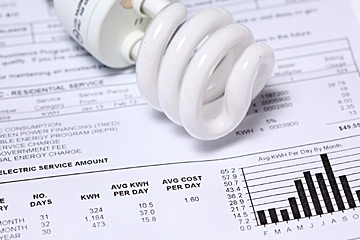
When it comes to your annual energy expenses, finding ways to not only save energy but also save some money can be a fruitful venture. A little work can go a long way towards giving you the control that will help you manage your energy wisely. Here are 3 helpful tips to save your business money on energy expenses.
1. Shop smart: When it comes to your facilities energy management, being a “Smart Shopper” can have tremendous upside. Lack of knowledge can be detrimental and even cost your facility money you could be putting towards the growth of your company. There are a few simple guidelines to follow.
First, consider using an energy consultant. These professionals can offer experience and guidance in a confusing energy market. Consultants offer a wide variety of energy services that can yield your two biggest benefits; cost savings and market knowledge.
Secondly, keep up with your energy management. Knowing contract end dates (off-contract rates can take a bite out of your budget), current contract and market rates, and understanding the product you are using will go a long way towards better, more educated decisions about your facilities financial future.
Finally, speak to your consultant about local, state, or federal government rebate programs or utility based rebates that can be offered to businesses. Energy rebate programs can offer financial incentives to businesses that take advantage of them while improving energy efficiency at the same time.
2. Make your facility more energy efficient: There are some inexpensive and simple ways to improve energy efficiency. Investing in programmable thermostats that monitor and control your HVAC energy consumption can shore up unnecessary consumption at hours when it?s not applicable. These devices maintain consistent usage patterns and will reduce usage in order to avoid those hefty monthly invoices.
Other useful tips include wrapping your water heater, lighting retrofits, and adding/inspecting insulation and door/window seals. Replacing strip heat can be another investment that will drastically help improve energy efficiency. Business appliances that may be old or outdated can often “leak” energy despite being operable. Ensuring you have energy efficient appliances such as energy star units and lighting retrofits means you continue to sustain functionality, but with improved efficiency. While updating these items requires an initial investment, you will reap the rewards of energy savings for years to come. Look for rebates, sales and government incentives when shopping.
3. Manage your facility’s usage: This one sounds obvious, but can often be the first aspect over-looked. Energy delivery costs you see on your monthly invoices are based on not only how much energy you consume, but also how you consume that energy. Generally, the more consistent and stabilized flow of energy to your facility can shield your facility from high or increasing delivery costs.
If you think of your daily and monthly usage in linear form, a line that is flat and smooth encounters better more stabilized monthly delivery charges In opposition, a wavy line of high peaks and low valleys in your usage pattern can yield increased delivery costs resulting from the inconsistent flow of energy. Basically your delivery company charges you according to how you use your electricity. They have to have a surplus available at all times to supply your facility in any scenario. They look at your peak load as the worst case scenario and because they have to supply according to that level, they charge you as a commercial customer your 12 month peak or 80% of that peak (whichever is higher)
To avoid the peaks and valleys scenario described above, bring equipment online in consistent intervals. Ramp up energy usage slowly to avoid “spiking” your usage to one of the high points can be a huge help. For churches that may only meet once a week or other seasonal energy users this can be a bit more difficult than say for instance a restaurant open 24 hours a day, 7 days a week. But the effort to manage this should be constant, regardless of facility.
Finally, avoid using “empty” sources of energy. Unused equipment such as computers, and phone chargers make up a small portion of the large list of ?empty? energy sources that are commonly found in business locations. Unplugging or eliminating these sources of energy altogether can add up and show real cost savings on your monthly invoices due to increased energy reduction.
